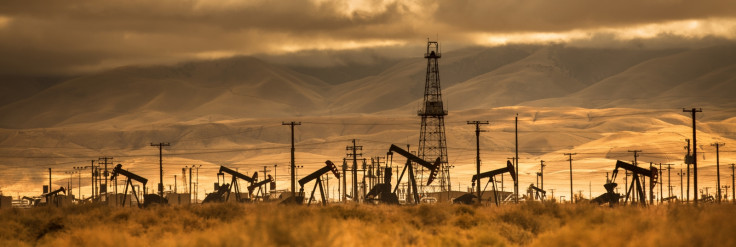America's abandoned gas and oil wells are spewing out methane - and Donald Trump is unlikely to help
Scientists estimate there could be as many as 750,000 abandoned wells in Pennsylvania alone.

Abandoned oil and gas wells across the US are a huge source of methane emissions currently not accounted for in America's greenhouse gas emission inventories. Researchers found these wells have been leaking methane for decades, with unplugged gas wells being the biggest emitters.
Previous estimates suggest there are at least three million abandoned wells across the country. The true figure, however, is thought to be much higher. One-hundred and fifty years of oil and gas development across US states coupled with poor documentation means the number of missing wells are not known.
More recently, scientists have realised that abandoned oil and gas wells potentially serve as a significant source of methane to the atmosphere. But because of missing well records, just how much methane they contribute is poorly understood. Furthermore, abandoned oil and gas wells are not included in US greenhouse gas inventories – even though evidence suggests they could be substantial.
In a study published in PNAS, scientists led by Mary Kang from Stanford University estimated the number of abandoned wells in Pennsylvania and worked out which ones produce the most methane.
"Methane is a potent greenhouse gas with a global warming potential 86 times greater than carbon dioxide over a 20-y time horizon," they wrote. "A reduction of methane emissions can lead to substantial climate benefits, especially in the short term. Recent measurements of methane emissions from abandoned oil and gas wells in Pennsylvania indicate that these wells may be a significant source of methane to the atmosphere."
The team looked at methane flow rates from 163 wells looking at what type of well it was – plugged or unplugged, gas or oil and whether the well was in a coal area.
They took measurements over two years and findings showed methane emissions remained steady, indicating they have been spewing gas into the atmosphere for decades. The highest emitters were unplugged gas wells in non-coal areas, and plugged but vented gas wells in coal areas.
In total, the team estimates there are between 470,000–750,000 abandoned wells in Pennsylvania, which produce between 0.04–0.07 Megatonnes of methane. "This estimate represents 5–8% of annual anthropogenic methane emissions in Pennsylvania," they wrote.
Researchers say the results can be used to target wells that produce most methane in order to curb emissions effectively. "Using the analysis framework presented here, scientists and policymakers can better estimate methane emissions and develop cost-effective mitigation strategies for the millions of abandoned oil and gas wells across the United States and abroad," they conclude.

But what will Donald Trump, the soon-to-be US president, do with this information? Kang told IBTimes UK that while it is not clear what the new administration's plans are for the future, climate change does not appear to be its top priority.
She said boosting oil, gas and coal – which Trump wants to do – will eventually result in more abandoned wells. "New development could come from making inactive wells active, using an abandoned well, and/or new drilling," she added.
"The impact of Trump's presidency on my research depends on his policies on climate change," she said. "It appears that he will be against policies aimed at reducing greenhouse gas emissions and will back out of the Paris agreement. If greenhouse emissions reductions is no longer a priority, methane emissions from abandoned oil and gas wells will be less likely to be addressed. However, there are other reasons for fixing leaky abandoned wells such as groundwater protection."
© Copyright IBTimes 2025. All rights reserved.






















